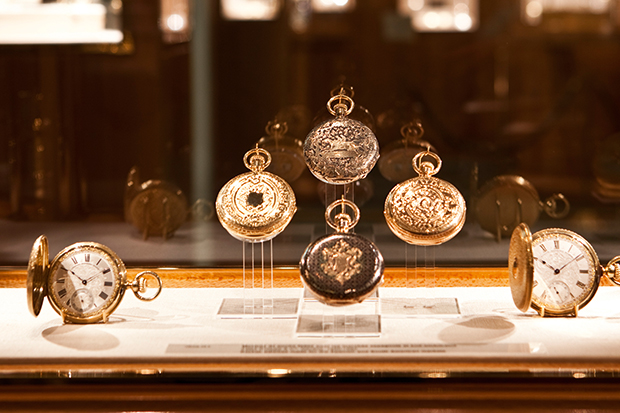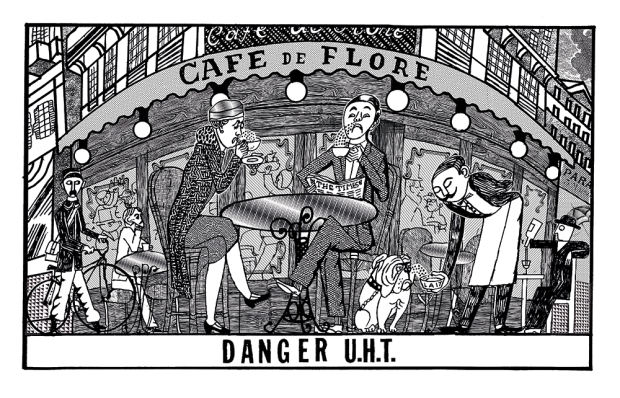In a quiet backstreet in Geneva, a few blocks from the lakeside, there is a museum which will change the way you think about that watch upon your wrist. When I first came here, a few years ago, I must admit I wasn’t expecting much: a glorified salesroom, exit through the gift shop… I couldn’t have been more wrong. This isn’t a suave exercise in soft sell — it’s a first-class museum, with one of the finest collections of watches in the world.
Like all the best museums, the Patek Philippe Museum is a labour of love, not a clever sales gimmick. Most of these watches aren’t made by Patek Philippe, and none of them are for sale. The museum is only 15 years old, but it feels as if it’s always been here. Against all expectations, I was enthralled. I’d meant to spend only an hour here. Ironically, surrounded by precious timepieces, I lost all track of time. Last summer, I ended up passing through Geneva on another story. I made a detour just to go here again.
If you weren’t looking for this museum, you could walk straight past it. From the outside it looks like a private bank — expensive yet discreet. Once you step inside it feels more like a boutique hotel. The lobby is smart but understated. Two smiling women greet you at the door. The first exhibit is a historic workshop, with machines from the 18th and 19th centuries. A master watchmaker is hard at work, restoring antique watches. Thankfully, he’s used to being stared at. He carries on regardless.
I take the lift up to the library on the third floor. There are about 8,000 books in here, but the ambience is intimate and personal. With its thick carpets and wooden bookshelves, it feels like the book-lined study of a private home. Its treasures include works by Galileo and Isaac Newton, but there are plenty of popular titles too — you’re welcome to stop and browse.
Across the hall is the office of Dr Peter Friess, the museum’s director. He’s written all sorts of books about clocks and watches. He’s also a master watchmaker. ‘There is no other collection like this anywhere,’ he tells me, emphatically. ‘This is the best of the best.’ He keeps adding to it. On a recent visit to England, he bought the first Perpetual Calendar by one of England’s most renowned horologists, Thomas Mudge.
We sit and chat about watches for a while, and then he takes me on a tour. Down a spiral staircase, on the second floor, is the historic heart of the collection: antique watches from 1500 to 1850. There are countless treasures to gawp at, but what this display reveals, above all else, is how watches developed, and why watchmaking thrived here in Geneva. Europeans had been using mechanical clocks ever since the 13th century, but they weren’t portable, because they were all based around pendulums. Then, around 1500, some bright spark invented the wind-up mainspring, and in France, southern Germany and northern Italy, the first mobile timepieces appeared. Draw a triangle between those three places. The centre of that triangle is Geneva.
Just as watchmaking was getting started, Geneva became Protestant, under John Calvin, a puritan who forbade any form of extravagant display. Because they were practical, not ornamental, watches were the only adornment he allowed, so Geneva’s jewellers turned to watchmaking. In other cities, it was locksmiths who made watches. The watches these jewellers made were a lot more delicate. They were joined by Huguenot craftsmen fleeing from France, and so Geneva became a centre of watchmaking expertise.
By 1800 watchmaking had become incredibly sophisticated, encompassing all sorts of variations. There are some exquisite examples in this museum. My favourites are the pocket watches featuring miniature portraits and clockwork automata. They’re more frivolous and impractical than any jewellery you can imagine. Calvin must be turning in his grave.
The first-floor display concludes this story, taking the visitor from 1850 to 2000. It makes you realise how watchmaking has reflected the innovations of every era, from scientific advances like longitude to artistic movements like Art Deco. It started out as a timekeeping tool for people on the move, but as this museum shows, the wristwatch has since become part of history. ‘I think everybody one day asks what time is and where it comes from,’ says Friess. ‘A nice watch incorporates all that. I think that’s why watches have such a high value in our society.’
So is watchmaking an art or a science? I ask him. He answers without any hesitation. ‘I think it is both.’
Got something to add? Join the discussion and comment below.
Get 10 issues for just $10
Subscribe to The Spectator Australia today for the next 10 magazine issues, plus full online access, for just $10.
You might disagree with half of it, but you’ll enjoy reading all of it. Try your first month for free, then just $2 a week for the remainder of your first year.














Comments
Don't miss out
Join the conversation with other Spectator Australia readers. Subscribe to leave a comment.
SUBSCRIBEAlready a subscriber? Log in